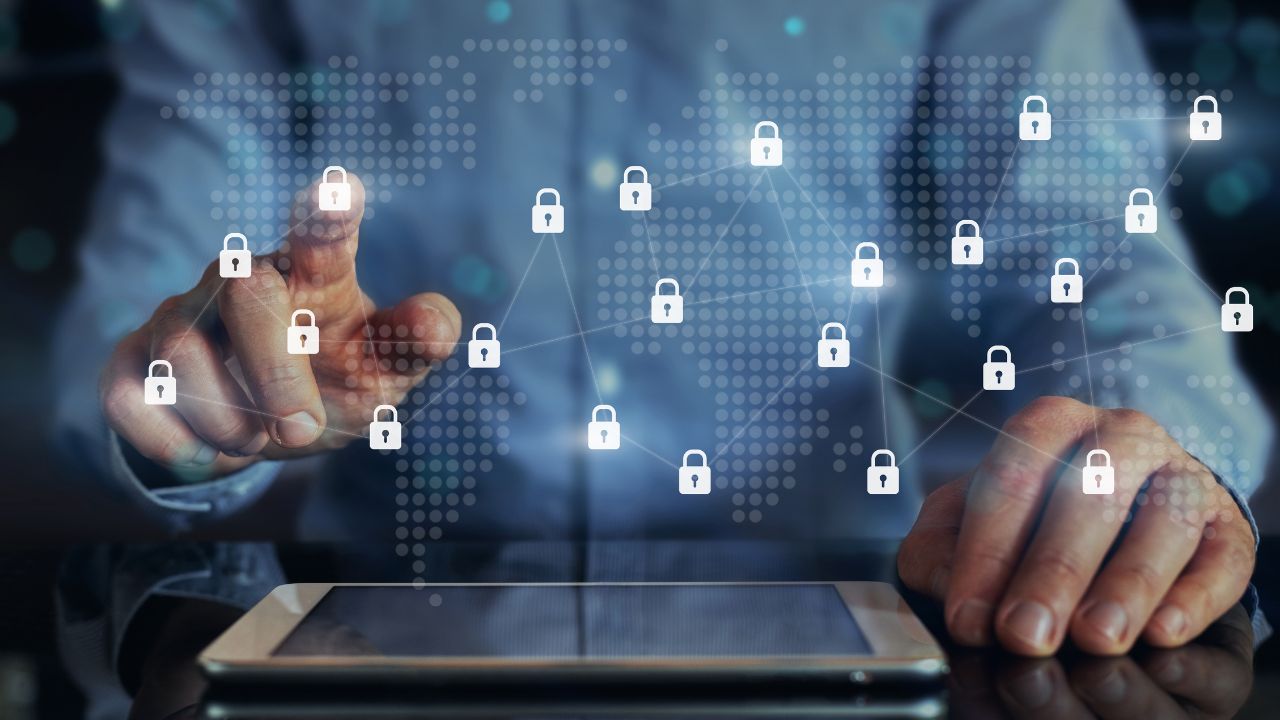
In today’s digital world, where threats lurk around every corner, protecting your organisation’s data and systems is paramount. However, navigating the intricate world of cybersecurity solutions can be overwhelming, filled with acronyms like EPP, EDR, MDR, and XDR. Understanding the distinct roles each plays is key to building a robust defence against cyber threats. In this article, we aim to simplify your cybersecurity understanding of these solutions with the aid of analogies.
1. EPP (Endpoint Protection Platform): Detecting known and signature-based threats
Imagine Endpoint Protection Platforms (EPP) as the diligent doorman guarding your organisation’s digital entryway. They act as the first line of defence, meticulously checking incoming traffic and preventing known threats like malware and viruses from infiltrating your endpoints (devices like laptops, desktops, and servers). Think of them as the initial security checkpoint, ensuring only authorised individuals and information enter your network.
2. EDR (Endpoint Detection and Response): Detecting suspicious activity
If a threat bypasses the doorman (EPP), Endpoint Detection and Response (EDR) steps in as the investigative team. It continuously monitors your endpoints for suspicious activities, like unauthorised access attempts or unusual file behaviour within the environment. When EDR detects something fishy, it alerts your security team, providing them with the necessary information to investigate and respond swiftly. Think of them as the security detectives who delve deeper, looking for hidden threats that might have slipped past the initial check.
The complexity inherent in EDR lies in the voluminous alert output, comprising a mix of legitimate threats and predominantly false positives. Effective management necessitates the expertise of cybersecurity professionals to discern genuine positives, fine-tune EDR settings, and mitigate the incidence of false alerts. Hence, an organisation who subscribes to an EDR solution without a proper cybersecurity team in place would render the solution ineffective. In order to resolve this, we have Managed Detection and Response (MDR).
3. MDR (Managed Detection and Response): EDR as-a-Service
For organisations lacking the internal expertise or resources to manage their own EDR, Managed Detection and Response (MDR) acts as the dedicated security team. It offers the same investigative capabilities as EDR, but with the added benefit of 24/7 monitoring and response by a team of security professionals. They handle the entire process, from threat detection and mitigation to elimination and remediation, freeing up your internal resources for other critical tasks. Think of them as the outsourced security experts, providing continuous vigilance and taking decisive action against potential threats.
4. XDR (Extended Detection and Response): Seeing the Bigger Picture
Extended Detection and Response (XDR) takes security a step further, acting as a central command centre. It goes beyond just endpoints and gathers data from a broader range of security tools across your entire IT infrastructure, encompassing networks, cloud workloads, email, user activities, and more. By analysing this holistic view, XDR can identify hidden threats and potential vulnerabilities that individual tools might miss, providing a comprehensive understanding of your security posture. Think of them as the central hub that gathers information from all corners of your digital landscape, offering a unified view of potential security risks.

Nightclub Security: Analogy for Cybersecurity Solutions
Still confused with those technical explanations, let’s make it simple. Imagine a bustling nightclub with different security measures in place:
- The Bouncers (EPP): These are your first line of defence. They check IDs, prevent suspicious people from entering, and stop them from bringing in illegal items. In the cybersecurity world, Endpoint Protection Platforms (EPP) act similarly, safeguarding your network by blocking known threats and malware at the entry point (endpoints like laptops and servers).
- CCTV (EDR): Once patrons enter, the video surveillance keeps an eye on things inside the club. They monitor for suspicious behaviour, identify troublemakers. Endpoint Detection and Response (EDR) works the same way in cybersecurity. It continuously monitors your endpoints for unusual activities, potential threats, and alerts your security team for investigation and response.
- Security Patrol (MDR): Just like how a CCTV alone without security guards is useless, EDR without a cybersecurity team to monitor and mitigate threats is also useless. If you don’t have your own security staff, you can hire a security company to manage your nightclub security. They provide 24/7 monitoring, threat detection, and response. Similar to that, Managed Detection and Response (MDR) is a service offered by security professionals who handle threat monitoring, mitigation, and remediation for organisations lacking internal security expertise.
- The Command Centre (XDR): A central command centre oversees the entire security operation of the nightclub. It collects data from various sources, like security cameras, bouncers’ reports and threat intelligence from other nightclubs as well, to get a unified view of everything happening. Extended Detection and Response (XDR) functions similarly in cybersecurity. It gathers data from various security tools across your network (patch management, email security, etc.) to provide a comprehensive view of your security posture and identify hidden threats.
Choosing the Right Cybersecurity Solution
The best solution for your organisation depends on your specific needs and resources. Here’s a quick guide to help you choose:
- EPP: Offers basic protection against known threats, ideal for organisations with limited security needs.
- EDR: Suitable for organisations with an internal security team seeking deeper insights into endpoint activity and the ability to investigate potential threats.
- MDR: Provides the same investigative capabilities as EDR, but with the added benefit of 24/7 monitoring and response by security professionals. Ideal for organisations lacking in-house expertise or requiring constant vigilance.
- XDR: Offers a comprehensive view of your organisation’s security posture by collecting data from various security tools across your network. Best suited for organisations seeking a holistic understanding of their security landscape and wanting to leverage insights from multiple tools.
Remember, a strong cybersecurity strategy involves layering different tools. Combining these solutions strategically creates a robust defence mechanism, safeguarding your organisation against ever-evolving cyber threats. Understanding the differences between EPP, EDR, MDR, and XDR empowers you to make informed decisions and build optimal protection for your organisation.
Tired of juggling complex endpoint security solutions? ArmourZero simplifies it all. Our comprehensive platform caters to your device, offering tailored protection that adapts to your evolving needs. Trusted by leading companies, ArmourZero gives you total endpoint security with just one platform. Ready to experience the difference? Book your free demo and see ArmourZero in action!
Concerned about cybersecurity threats to your business?
Assess your risk by conducting a cybersecurity risk assessment. Plus, get your security rating checked for free with ArmourZero!

Written by:
Fanny Fajarianti (Performance Marketing). Experienced digital marketer in the information technology and services industry.
Share this post
Related Posts

Earth Day: The Connection of Cybersecurity and Sustainability
- 22 Apr 2024
- By:Fanny Fajarianti
- Category: ArmourHacks
Uncover the link between Earth Day and Cybersecurity, promoting sustainability through data protection and environmental stewardship. Let’s secure a greener future.

What is DevSecOps? Definition & Best Practices for Tech Industries
- 18 Apr 2024
- By:Bernadetta Septarini
- Category: ArmourHacks
Learn about DevSecOps, principles, and best practices for the tech industry. Integrate security seamlessly into software development and enhance quality.

Safeguarding Your Organisation During the Hari Raya Holiday
- 09 Apr 2024
- By:Bernadetta Septarini
- Category: ArmourHacks
Protect your organisation from holiday cyberattacks during Hari Raya. Learn more about the risks and best practices for holiday security with ArmourZero.

Cyberattacks: A Growing Threat to Higher Education
- 02 Apr 2024
- By:Fanny Fajarianti
- Category: ArmourHacks
Universities hold sensitive data but face cyberattack risks in the digital age. Explore the impact of cyberattack and learn how to protect your institution.

